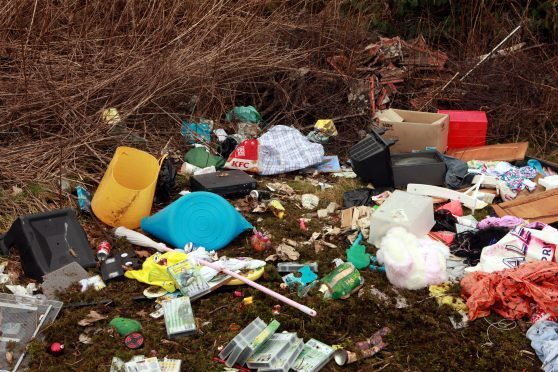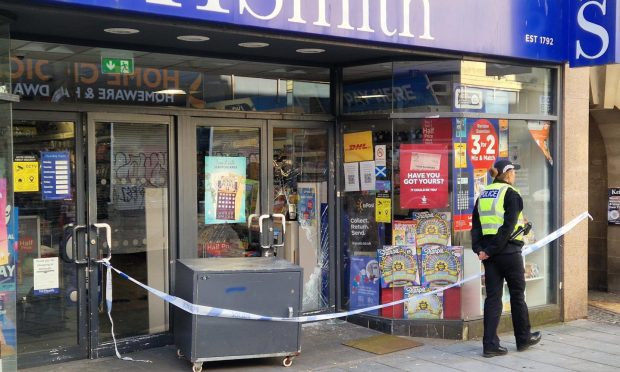Despite costing the country more than £9 million a month, very few fly-tippers are being prosecuted.
Recent statistics show that only 56 people have appeared in Scottish courts for fly-tipping in the last three years.
This is approximately one prosecution for every 2,800 incidents reported.
However, waste management teams told The Courier that only repeat offenders tend to be pursued through the courts.
Often fly-tippers are dealt with by a sternly worded letter, or a knock on the door from their local environmental health officer.
Anyone caught fly-tipping faces a fixed penalty noticed of £200, but if it goes unpaid they could face further prosecution and a penalty of up to £40,000.
Among the most recent cases was Graeme Burt, who appeared at Kirkcaldy Sheriff Court for dumping asbestos waste on land at Aberhill Industrial Estate, Methil.
SEPA led the investigation after police raised the alarm. Burt was ordered to undertake 250 hours of unpaid work as part of a community payback order.
Reporting officer Kerryn Sievewright said: “Mr Burt acted deliberately when he fly-tipped this waste.
-
For more on our investigation, click here
“Asbestos is classed as a hazardous waste and there are strict controls in place for its safe disposal at appropriately licensed facilities.
“Mr Burt saved £246 on not having the asbestos disposed of legally. We will not tolerate fly-tipping and we hope this ruling will serve as a warning to others.”
However, research suggests that the threat of prosecution may not be much of a deterrent.
A study based on interviews of local authority officials found that effective enforcement is hampered because of the limited reported, with some complainers – particularly in deprived areas – reluctant to come forward for fear of reprisals.
There are also problems when there is a question mark over who owns the land which is being dumped on. In some cases, its quicker and easier for the council to clear up than it is to track down the landowner.
A more recent survey by Zero Waste Scotland found the majority of people (58%) supported more severe punishments against fly-tippers, with only 21% saying that the punishments should be lower.
More than half of 45 to 54-year-olds thought fly-tippers should be given a £5,000 fine or put in prison. Only 20% of 18 to 24-year-olds felt the same.
Research by the Australian NSW Environment Protection Authority found that naming and shaming businesses guilty of fly-tipping could be more effective because of possible damage to their reputation.
In Israel, drivers who are caught illegally dumping construction and demolition waste can have their vehicles impounded. This was found to be an effective deterrent.
Scottish Tory justice spokesman Liam Kerr has called for tougher action. “It is hugely important that those caught fly-tipping are given the appropriate punishment,” he said. “This is a disgraceful thing to do and a crackdown will certainly deter others from doing the same.”
Council umbrella group Cosla said it was working on an improved approach to fly-tipping, focusing on prevention.
A spokesman said: “Scottish councils are well aware of the problems and significant costs caused by fly-tipping and litter.
“Cosla is working with a number of local authorities and the Scottish Government, looking to develop an improved approach.”
He said: “Part of this will be the development of a new set of tools to deal with litter and fly-tipping, and increased responsibilities for the wider public and private sector.
“The focus will be very much on prevention, which is the most cost-effective approach.”










